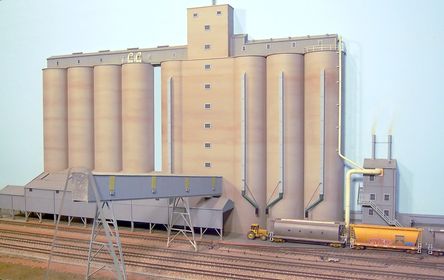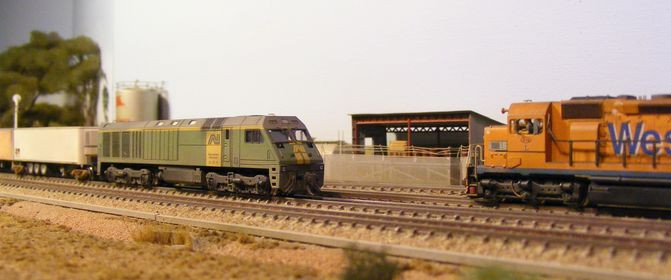Challenges and Solutions in Model Railroad Scenery
Model railroading is a popular and rewarding hobby that allows enthusiasts to create miniature worlds, complete with intricate landscapes and realistic scenery. However, like any hobby, it comes with its own set of challenges. In this article, we'll explore some common challenges in model railroad scenery and discuss practical solutions to overcome them.
Avoiding Overcrowding: Balancing Elements
One of the primary challenges in model railroad scenery is avoiding overcrowding. Enthusiasts often get excited about adding numerous elements to their layouts, from buildings and trees to vehicles and people. While it's tempting to include as much detail as possible, overcrowding can lead to a cluttered and unrealistic look. Here's how to balance elements effectively:
1. Planning and Design
Before you start building your model railroad scenery, create a detailed plan. Decide on the theme and era of your layout, and research the real-world landscapes you want to replicate. This planning phase will help you determine which elements are essential and which can be omitted.
2. Selective Compression
In real life, landscapes feature an immense amount of detail that may not be feasible to replicate in a model. To combat overcrowding, employ selective compression. This technique involves selectively simplifying or omitting certain elements to maintain a harmonious and realistic appearance.
3. Create Focal Points
Identify key focal points on your layout and allocate more detail and attention to these areas. This draws the viewer's eye to specific points of interest, reducing the risk of overcrowding in less critical areas.
4. Use Perspective
Utilize forced perspective techniques, such as decreasing the scale of objects as they move farther away from the viewer. This gives the illusion of depth and space on your layout, reducing the perception of overcrowding.
Dealing with Limited Space: Small Layout Solutions

Many model railroaders face the challenge of limited space, whether due to a small room or a desire for a compact layout. Fortunately, there are several solutions to make the most of your available space:
1. Multi-Level Layouts
Consider building multi-level layouts to maximize space. By stacking multiple levels, you can create more track and scenery within a confined area while maintaining a visually appealing design.
2. Narrow Gauge Railroads
Explore narrow gauge railroads, which use smaller track gauges and tighter curves. These layouts can fit into narrower spaces without sacrificing realism and detail.
3. Modular Layouts
Opt for a modular layout system that allows you to build small, transportable sections. This approach enables you to expand your layout gradually and adapt it to various spaces. If you are interested in modular layouts T Trak is an excellent option, consider stopping by Midwest Model Railroad to see the KC T Nuts T Trak layout that is on display in our store.
4. Vertical Space
Don't forget to utilize vertical space by adding elevated sections, bridges, and tunnels. This not only saves horizontal space but also adds visual interest to your layout.
Maintenance and Preservation: Ensuring Longevity
Once you've built your model railroad scenery, another significant challenge is maintaining and preserving it over time. To ensure the longevity of your layout, consider these solutions:
1. Regular Cleaning
Dust and debris can accumulate on your scenery and tracks, affecting performance and aesthetics. Implement a regular cleaning routine using specialized tools to keep your layout in top condition.
2. Protective Barriers
Install clear, removable barriers around your layout to prevent accidental damage from handling or environmental factors. These barriers can also deter curious pets or children.
3. Climate Control
Maintain a consistent and suitable climate in the room where your layout is located. Extreme temperatures and humidity fluctuations can damage your scenery and rolling stock. Invest in climate control systems if necessary.
4. Repair and Restoration
Regularly inspect your layout for signs of wear and tear. Address any issues promptly, whether it's replacing worn-out tracks or refurbishing scenery elements. Proper maintenance can extend the life of your model railroad.
In conclusion, model railroad scenery offers endless opportunities for creativity and expression, but it comes with its fair share of challenges. By planning your layout carefully, optimizing limited space, and implementing effective maintenance practices, you can enjoy a captivating and long-lasting model railroad that brings joy for years to come.
Photos Courtesy of John Miller of his N-Scale layout based on Westrail operations at West Merredin in Western Australia during the 1990's.
Recent Posts
-
Prototype Spotlight: GE ES44AC — Modeling a Modern Freight Workhorse
Prototype Spotlight: GE ES44AC — Modeling a Modern Freight Workhorse Published 2025-09-29• 8–10 min
-
How to Build a Realistic Freight Yard: Flow, Trackwork, and Car Management
How to Build a Realistic Freight Yard: Flow, Trackwork, and Car Management Published 2025-09-25 • 8
-
Scenery Basics: From Foam to Foliage — A Quick, Budget-Friendly Guide | Midwest Model Railroad
Modeling Tutorial Scenery Basics: From Foam to Foliage Published 2025-09-23 · 7–9 minute read Li




